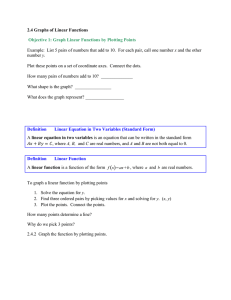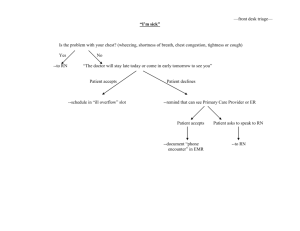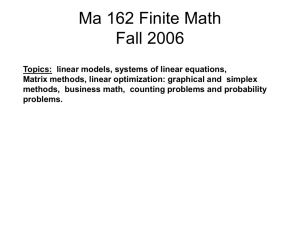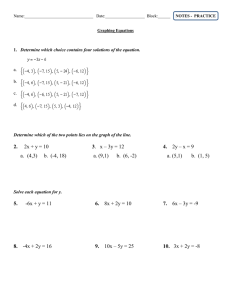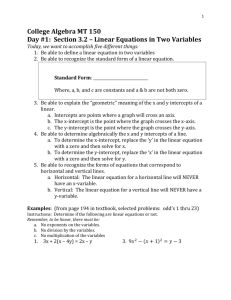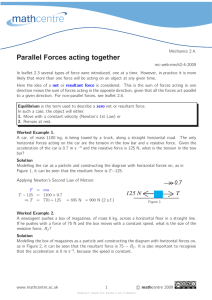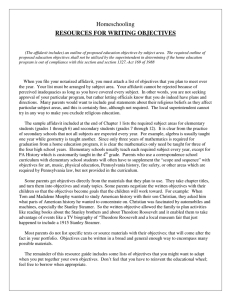MTH 100 Graphs Of Linear Functions
advertisement
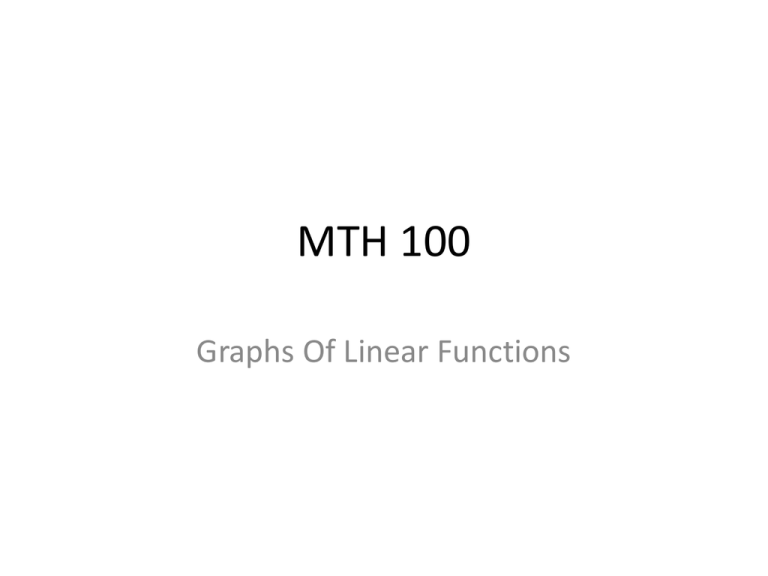
MTH 100 Graphs Of Linear Functions Objectives 1. Graph Linear Functions by Plotting Points. 2. Graph Linear Functions by Using Intercepts. 3. Graph Horizontal and Vertical Lines. Overview • Recall, from Section 2.1, that a linear equation can be represented by a straight line. • A linear function can also be represented by a straight line. • IMPORTANT: “f(x)” means the same thing as “y”. Objective 1 • The table-of-values method will work here just as it did previously. • If the function is written as “f(x) =“, or “y = “, choose values for x only. • Examples: f ( x) 3 x 2 3 y x2 5 2 x 5 y 14 Objective 2 • Recall, from Section 2.1, that: --to find an x-intercept, set y = 0 and solve for x; --to find a y-intercept, set x = 0 and solve for y (remember, f(x) means the same as y). • Examples: 4 x 5 y 20 1 f ( x) x 1 3 y 2x Objective 3 • A linear equation written “x =“ produces a vertical line. • A linear equation written “y =“ or “f(x) =“ produces a horizontal line. • Examples: x 5 y 1 f ( x) 4

